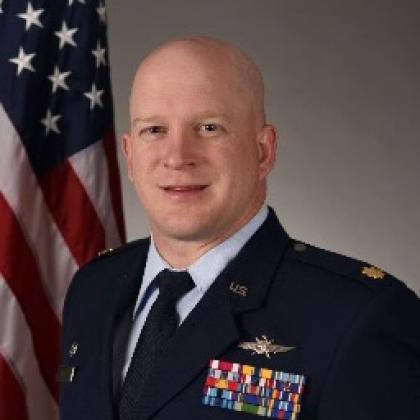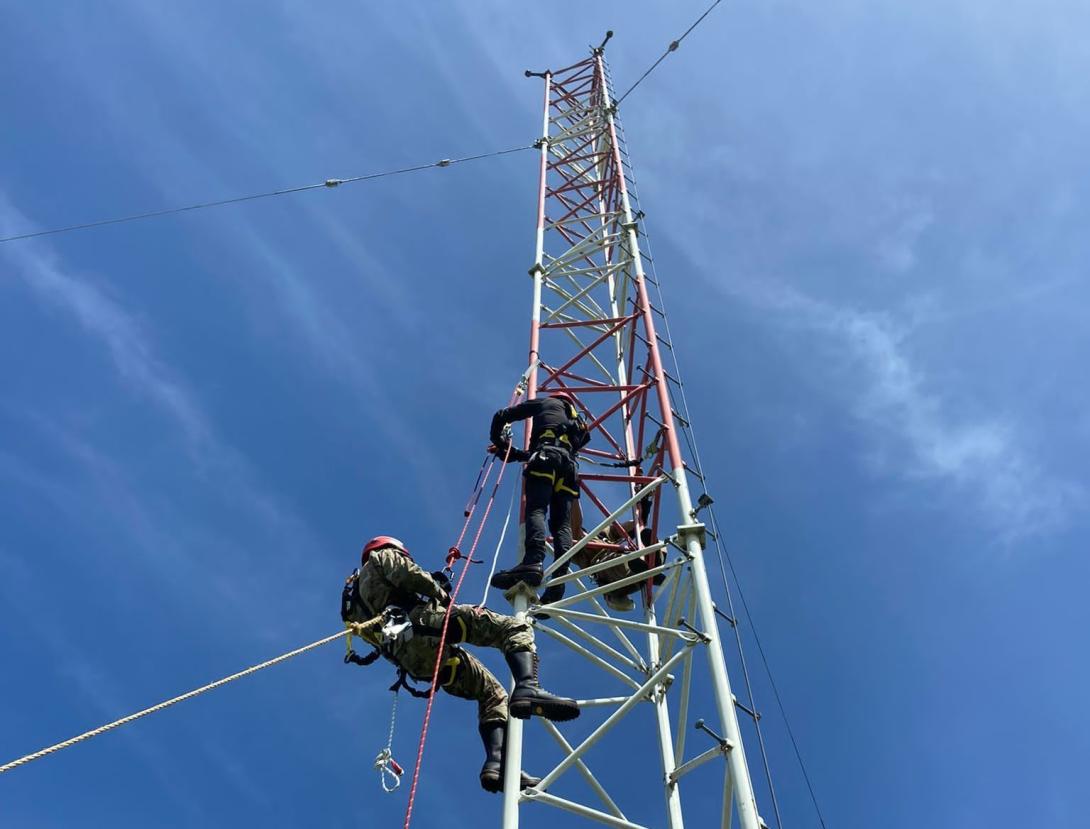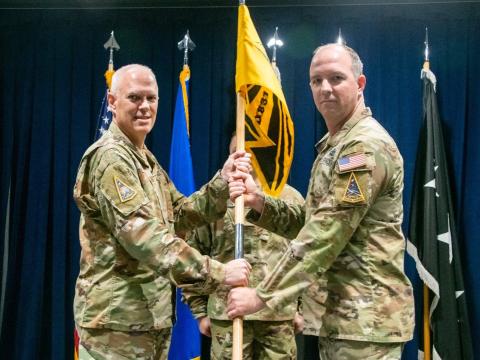Evolving Into Engineering and Installation
The 1st Communications Maintenance Squadron is in the process of transforming itself into an engineering and installation (E&I) squadron, according to Maj. Caleb Mays, commander, 1st Communications Maintenance Squadron, Kapaun Air Station, Germany. The squadron’s mission area covers three continents and numerous countries.
For the U.S. Air Forces in Europe and Africa, the 1st Communications Maintenance Squadron is responsible for delivering specialized communications capabilities, such as theater-related electromagnetic spectrum operations, rapid network restoration, network extensions and optimization operations, according to the organization.
“Think big installation projects,” Maj. Mays said. “How the data moves, that is what we take care of, so we are talking about fiber optics; we are doing copper and radio waves. We are putting cable in the ground. Think permanent, we are not doing temporary installations. We are doing the big installations. That is what engineering and installation brings to the fight.”
The U.S. Air Force has worked over the last couple of years to transfer its operations into agile combat employment (ACE), where the service sends out smaller, more agile teams of airmen, technology and aircraft that are equipped to survive and move quickly in a contested, near-peer environment. The 1st Communications Maintenance Squadron provides the long-term communications capabilities that support ACE and other operations in the Europe and Africa area of responsibility (AOR).
“A communications squadron or an ACE team might go out and be in place for a little while, or they move forward, and we are the first element behind them,” Maj. Mays explained. “They need to keep being light, lean and agile and go forward. When there is a follow-on element, we are going to come after and make it permanent so that a bigger element can come next. Perhaps a wing headquarters moves forward, or forces from the States start moving in and they need a bigger place to do their jobs from and generate aircraft from, we are the ones to provide that kind of follow-up capability.”
The transformation into an E&I squadron will help meet the needs of the evolving operating environment, the major said.
“As the Air Force has changed, other squadrons have been put in place, with a lot of other engineering and installation squadrons, both active duty and guard,” Maj. Mays said. “And the work we do is very similar. Within the [E&I] community, we are kind of recognized as an E&I squadron a bit, but getting recognized outside the community as an E&I squadron is the goal.”
To become an E&I squadron, the unit will need to shift some of its processes regarding training, quality assurance and project management—and add personal.
“There's an aspect of growth in that,” he said. Some of the airmen do receive their E&I training—including cable, antenna, network and radio instruction—already from the Pennsylvania Guard’s Lightning Force Academy at Fort Indiantown Gap. Maj. Mays expects to send airmen to the academy more frequently than before once they are fully an E&I squadron.
What will not change is the squadron’s need to work with allies and partners, especially across NATO, to provide the crucial long-term communications capabilities. Installation in the AOR does require navigating through the processes and bureaucracies of other countries, with a wide geographic range from the North and South, and across to NATO’s eastern flank.
“It is certainly further east from Estonia down to Romania, down to folks in Greece. It's all along the edge,” the major stated. “Geographically, it can be challenging right now, particularly in the NATO countries. When we talk about getting dig permits, we are working with the host countries. We respect them, and we are not just at peace with them but also in alliance with them, and they have processes too. We are not going to step on their toes.”

Within the engineering and installation [E&I] community, we are kind of recognized as an E&I squadron a bit, but getting recognized outside the community as an E&I squadron is the goal.
Maj. Mays is especially proud of the squadron’s short-notice missions, whether it be to restore communications after a cable cut or a fiber degradation.
“I'm proud of the team for their rapid response capability and their ability to do [those types of installations]. I'm proud of the quality that we produce," he said. "We deployed to Africa recently, a team of four airmen, and they got to do a project start to finish, to the tee, by the book on how it should be, and the quality was top notch.”
Another emerging capability in which the squadron is expanding its capabilities is radio frequency identification. According to the major, they are pushing the bounds of radio frequency identification to know what jamming they are seeing from a radio perspective.
“It is being able to say yes, that is coming from a signal emitter over there,” he explained.
The Air Force then works with the host countries or local law enforcement to address the source of the transmission, he said.
“It's great to be in a communications-focused, not just squadron, but group…and how we enable [U.S. Air Forces in Europe] communications every day,” Maj. Mays said.





Comments